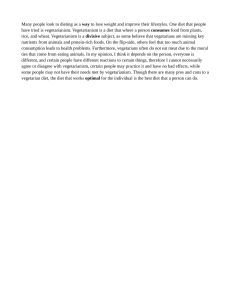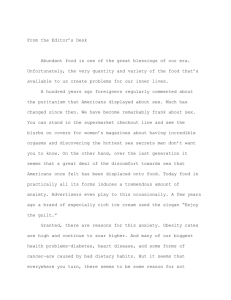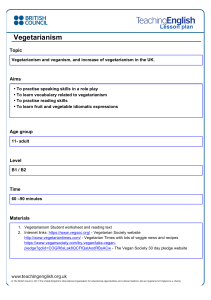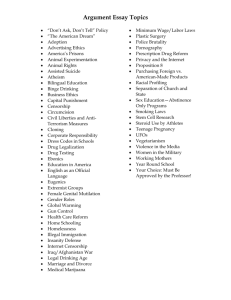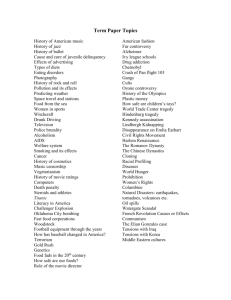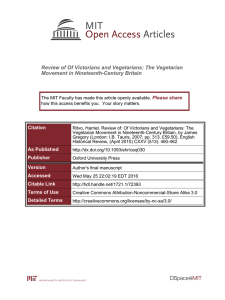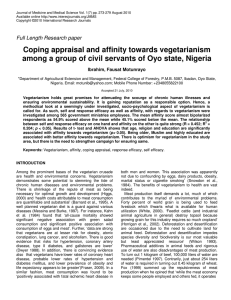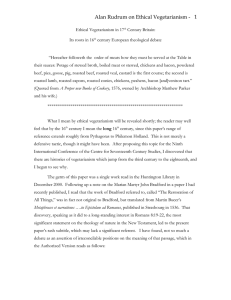Concept Mapping
advertisement
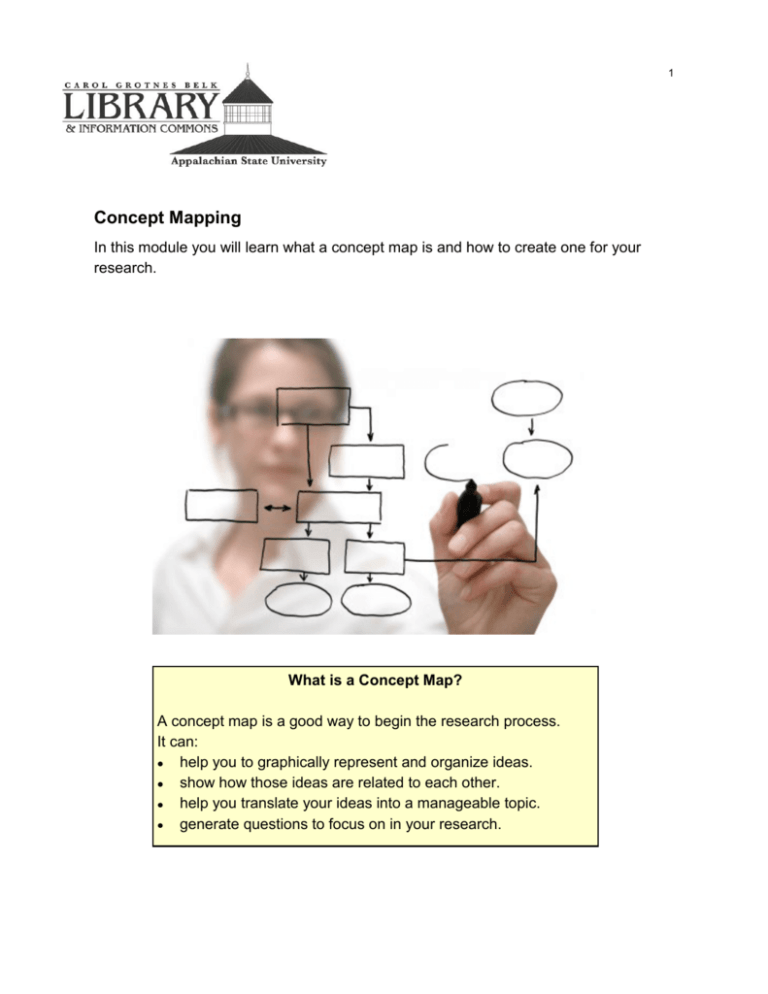
1 Concept Mapping In this module you will learn what a concept map is and how to create one for your research. What is a Concept Map? A concept map is a good way to begin the research process. It can: help you to graphically represent and organize ideas. show how those ideas are related to each other. help you translate your ideas into a manageable topic. generate questions to focus on in your research. 2 Research is a creative process, involving both analysis, in which you take things apart, and synthesis, in which you put things together. Your unique product will be the result of your individual thinking and ways of understanding and communicating about your topic. This page is adapted from Humbolt University’s Research Road Map Series, Topics: Concept Map. (http://library.humbolt.edu/researchroadmap/topics/topic03a.html) 3 Why use a Concept Map? A Concept Map can help you: organize ideas and define a topic, develop keywords and synonyms, reveal patterns and themes between ideas. generate search terms for your research. 4 In our example we will use the topic of vegetarianism to illustrate how to create a concept map. Begin by writing it down and drawing a circle around it to illustrate that this is the main topic. Vegetarianism 5 Next begin brainstorming ideas for the topic of vegetarianism. There are many issues to explore. Begin with issues related to varieties of vegetarianism, ethics and diet, health benefits and concerns, the environment and diet, religion and diet, and demographics. Link the issues around the main topic by drawing lines connecting them. The point of this first step is to identify issues related to the main topic. 6 We now have a good start of building a concept map for the topic of vegetarianism. We have identified several areas relating to the main topic and connected them by lines. Next we will take a closer look and identify sub-topics for each. In the example below, the main topic is vegetarianism, with the related topics in blue and sub-topics for each topic in yellow. We now have an extended list of keywords and concepts to use as we search for information. As you can see, our concept map is beginning to grow. We should continue to brainstorm for possible ideas. We may not use all of the information that we write down, but this approach lets us easily see the various relationships among our possible topics. 7 Review the concept map to: identify relationships between concepts. see if all the pieces fit together or if anything is missing. 8 Use the completed concept map to: generate a list of research questions for the topic. identify keywords and synonyms for the topic. See some examples below. 9 If you would like to try making your own concept map, here is a good site to try: https://bubbl.us 10 SUMMARY Now you should know how to use a Concept Map to help you translate your ideas into a manageable topic and generate questions to focus on in your research. 7/26/11
